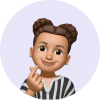Should Community Education Programs Use TikTok To Promote Classes?



You’ve heard people talking about TikTok. Maybe you’ve seen TikTok videos shared on other social media platforms. You might even be on the platform yourself. It seems like just about everyone is these days. From pre-teens offering each other dance challenges to colleges and universities employing TikTok influencers, everyone seems to be finding their niche on TikTok. All this has you wondering: Should your community education program use TikTok?
Would TikTok help you promote your classes, attract more students, or reach a wider audience? It might. But as with any form of social media, you need a good understanding of the platform and a solid strategy before you try to use TikTok for education programs.
Think of this blog post as a crash course in TikTok. We’ll explore what it is, how you might use it to promote your programs, and what you need to thrive on TikTok. Let’s get started.
TikTok 101: History of TikTok
Originally created in China, TikTok emerged onto the international stage after merging with Music.ly, which was mostly used for sharing lip sync videos. Like most social media apps, it was eagerly adopted by younger people, before gaining wider acceptance among adults.
While some deride TikTok as silly, a waste of time, or even a threat to national security, there’s no denying that it is popular. In 2021, TikTok reached 1 Billion monthly active users. That might not sound like much compared to Facebook’s 2.89 billion, but it beats out Twitter by hundreds of millions.
Now, in addition to lip-sync videos and dance challenges, you can find #booktok (where users share a love of books), the confessional ramblings of Elyse Myers, a self-proclaimed awkward person catapulted to fame by TikTok, and even educational videos.
How Does TikTok Work?
TikTok capitalizes on our desire for new and interesting content by delivering bite-size videos in a full-screen format. Anyone with an email address can create a TikTok account and start sharing videos with the world. These videos are short, no more than three minutes and often much shorter.
The TikTok algorithm decides what to show each user based on data that includes the user’s engagement, hashtags and keywords, and categorization. Crucially, TikTok also recognizes where in the world the user is and serves up videos in their native language with a bias toward local creators. This is important because it means that TikTok may be able to help you reach students near you!
Because TikTok was originally a music-sharing app, music is still a big part of the platform. Videos usually have background music and some use spoken-word audio clips either as narration or for the presenter to lip-sync to.
TikTok For Education Programs
So how does all of this come together to help you promote your education program? If you’re teaching technology to seniors, TikTok might not be your ideal marketing platform. For almost everyone else, it does offer some possibilities.
Here are a few ways you might use TikTok to promote your programs:
- Share fun facts or tips from classes
- Showcase student art or performance
- Record instructors in action
- Show off your classrooms or performance space
- Offer study advice or tips for learning
The most important thing to remember is that on TikTok, almost everything is skippable. That means that your video needs to be interesting or entertaining or it won’t be seen. Platforms like Instagram or Pinterest may be more aspirational, but TikTok is all about authenticity.
What Makes a Good TikTok
To maximize your reach and engagement on TikTok, start with a strong video clip and then supplement it with music, hashtags, captions and even stickers.
Bite-size content. Keep your videos as short as possible. Focus on one skill, one funny story, one classroom. Although TikTok videos can now run as long as 3 minutes, most users won’t watch that long.
Authenticity. TikTok is not about shiny perfection. Users want to feel like they’re getting to know your instructors and your program. Ideally, you’ll choose one person to be the face of your program and deliver your content. It’s okay to make mistakes, flub lines, and use silly props. You’re not trying to make a commercial here, you’re trying to make a connection.
Hashtags and descriptions. Hashtags can help your content get discovered. Pick a few broad hashtags like #learnontiktok or #educationtiktok to help categorize your content. You might also pick more specific hashtags like #theaterclass or #learntodraw to tell people about your subject. Finally, you can get even more specific about the content of each video with hashtags like #oilpaints or #behindthescenes.
It’s a good idea to spend some time on the platform and see what others are doing so you can get a sense of what works.
So Is TikTok for Education Right For Your Program?
Maybe. TikTok can be a powerful way to reach younger audiences. It’s also a fun way to share the unique personality of your program. But it’s not for everyone. If you’re willing to put in the time, you may build an audience. There’s no guarantee that they will sign up for classes, but about 50% of TikTok users say they’ve bought something directly from the app. So it may be an avenue worth exploring.
Before you dive into TikTok, make sure the rest of your class marketing strategy is in good shape. Consider other social media platforms, your email list, and how students and instructors can help promote your programs.
Once you have all that in place, you can experiment with TikTok. Spend some time getting to know the platform and learning how it all works before you launch a full campaign.
Of course, if you do attract new students with your TikTok videos, you’ll want a simple online registration solution so they can sign up immediately. That’s where CourseStorm comes in. Our impossibly simple registration software makes it easy for students to enroll in your classes.
Start your free trial today.
Save time and grow your impact with CourseStorm











